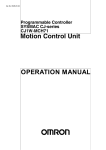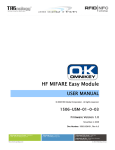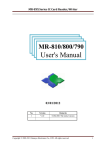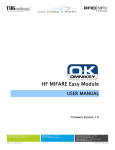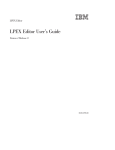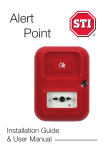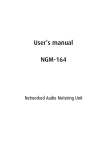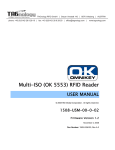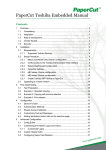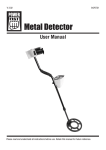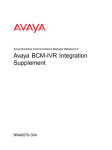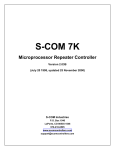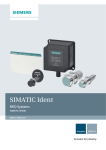Download MIFARE® Reader User Manual
Transcript
MIFARE® Reader User Manual idvation GmbH Otto-Hesse-Straße 19 / T5 Phone +49 6151 4923021 D-64293 Darmstadt Fax +49 6151 3689296 [email protected] www.idvation.com MIFARE® Reader Users manual Elatec GmbH reserves the right to make changes to its products or services or to discontinue any product or service at any time without notice. Elatec provides customer assistance in various technical areas, but does not have full access to data concerning the use and applications of customer's products. Therefore, Elatec assumes no liability and is not responsible for customer applications or product or software design or performance relating to systems or applications incorporating Elatec products. In addition, Elatec assumes no liability and is not responsible for infringement of patents and/or any other intellectual or industrial property rights of third parties, which may result from assistance provided by Elatec. Elatec products are not designed, intended, authorized or warranted to be suitable for life support applications or any other life critical applications that could involve potential risk of death, personal injury or severe property or environmental damage. With the edition of this document, all previous editions become void. Indications made in this manual may be changed without previous notice. Composition of the information in this manual has been done to the best of our knowledge. Elatec does not guarantee the correctness and completeness of the details given in this manual and may not be held liable for damages ensuing from incorrect or incomplete information. Since, despite all our efforts, errors may not be completely avoided, we are always grateful for your useful tips. The installation instructions given in this manual are based on advantageous boundary conditions. Elatec does not give any guarantee promise for perfect function in cross environments. idvation GmbH Otto-Hesse-Straße 19 / T5 Phone +49 6151 4923021 D-64293 Darmstadt Fax +49 6151 3689296 [email protected] www.idvation.com MIFARE® Reader Users manual Safety Instructions / Warning - Read before start-up! The device may only be used for the intended purpose designed by for the manufacturer. The operation manual should be conveniently kept available at all times for each user. Unauthorized changes and the use of spare parts and additional devices that have not been sold or recommended by the manufacturer may cause fire, electric shocks or injuries. Such unauthorized measures shall exclude any liability by the manufacturer. The liability-prescriptions of the manufacturer in the issue valid at the time of purchase are valid for the device. The manufacturer shall not be held legally responsible for inaccuracies, errors, or omissions in the manual or automatically set parameters for a device or for an incorrect application of a device. Repairs may be executed by the manufacturer only. Only qualified personnel should carry out installation, operation, and maintenance procedures. Use of the device and its installation must be in accordance with national legal requirements and local electrical codes. When working on devices the valid safety regulations must be observed. idvation GmbH Otto-Hesse-Straße 19 / T5 Phone +49 6151 4923021 D-64293 Darmstadt Fax +49 6151 3689296 [email protected] www.idvation.com MIFARE® Reader Users manual Content 1 INTRODUCTION .............................................................................................................................6 2 INSTALLATION OF NANOMF........................................................................................................7 2.1 DIMENSIONS ..................................................................................................................................7 2.2 PINNING ........................................................................................................................................7 2.3 ELECTRICAL CHARACTERISTICS ......................................................................................................8 2.4 EXTERNAL CONNECTIONS ..............................................................................................................8 2.4.1 Antenna ...................................................................................................................................8 2.4.2 Serial connection .....................................................................................................................9 2.4.3 Usage of GPIOs ......................................................................................................................9 2.4.4 Asynchronous Reset ...............................................................................................................9 2.4.5 Power supply ...........................................................................................................................9 3 SETTING UP A TERMINAL PROGRAM ......................................................................................10 4 REGISTER SET.............................................................................................................................11 4.1 EEPROM MEMORY ORGANIZATION ..............................................................................................11 4.2 STATION ID (04H) ........................................................................................................................11 4.3 PROTOCOL CONFIGURATION (05H)................................................................................................11 4.3.1 AutoStart (default 1) ..............................................................................................................12 4.3.2 ExtendID (default 0) ..............................................................................................................12 4.3.3 Multitag (default 0) ................................................................................................................12 4.4 RESET OFF TIME (07H) ................................................................................................................13 4.5 RESET RECOVERY TIME (08H) .....................................................................................................13 4.6 USER DATA (10H – 13H)...............................................................................................................15 4.7 BEEP TONE AND LENGTH (14H, NANOMF ONLY) ............................................................................15 5 COMMANDS .................................................................................................................................16 5.1 INSTRUCTION SET ........................................................................................................................17 5.2 ERROR CODES ............................................................................................................................18 5.3 TRANSPONDER SERIAL NUMBER RELATED COMMANDS ...................................................................18 5.3.1 Continuous read mode ‘c’ .....................................................................................................18 5.3.1.1 5.3.1.2 5.3.1.3 5.3.2 Multitag continuous read mode .................................................................................................. 18 AutoStart .................................................................................................................................... 18 Extended ID ............................................................................................................................... 19 Select single tag ‘s’ ...............................................................................................................19 5.3.2.1 5.3.2.2 5.3.2.3 Select a single tag...................................................................................................................... 19 Extended ID ............................................................................................................................... 19 Multiple tags ............................................................................................................................... 19 5.3.3 MultiTag selection / tag list ‘m’ ..............................................................................................20 5.4 DATA-TRANSACTION RELATED COMMANDS ....................................................................................21 5.4.1 Login (authenticate tag) ‘l’ .....................................................................................................21 5.4.1.1 5.4.1.2 Login with key stored in EEPROM ............................................................................................. 22 Login in multiple tag surroundings ............................................................................................. 22 5.4.2 Read data block ‘r’ / ‘rb’.........................................................................................................23 5.4.3 Write data block ‘w’ / ‘wb’ ......................................................................................................23 5.5 VALUE BLOCK RELATED COMMANDS ..............................................................................................25 5.5.1 Create value block ‘wv’ .........................................................................................................27 5.5.2 Read value block ‘rv’ .............................................................................................................28 5.5.3 Increment value block ‘+’ ......................................................................................................28 5.5.4 Decrement value block ‘-‘ ......................................................................................................30 5.5.5 Copy value block ‘=’ ..............................................................................................................31 5.6 SETUP-RELATED COMMANDS OF THE READER ................................................................................32 5.6.1 Read EEPROM register ‘re’ ..................................................................................................32 idvation GmbH Otto-Hesse-Straße 19 / T5 Phone +49 6151 4923021 D-64293 Darmstadt Fax +49 6151 3689296 [email protected] www.idvation.com MIFARE® Reader Users manual 5.6.2 Write EEPROM register ‘we’ .................................................................................................32 5.6.3 Write master key ‘wm’ ...........................................................................................................33 5.7 MISCELLANEOUS COMMANDS .......................................................................................................34 5.7.1 Get Station ID ‘g’ ...................................................................................................................34 5.7.2 Antenna power off ‘poff’ ........................................................................................................34 5.7.3 Antenna power on ‘pon’ ........................................................................................................34 5.7.4 Get version ‘v’ .......................................................................................................................34 5.7.5 Reset ‘x’.................................................................................................................................35 5.7.6 Reload factory defaults ‘xf’ ....................................................................................................35 5.8 NANOMF RELATED COMMANDS ....................................................................................................36 5.8.1 Beep ‘b’ .................................................................................................................................36 5.8.2 Read GPIO ‘ir’ .......................................................................................................................36 5.8.3 Write GPIO ‘iw’ ......................................................................................................................36 5.8.4 Read GPIO1 ‘pr’ ....................................................................................................................37 5.8.5 Write GPIO1 ‘pw’ ...................................................................................................................37 6 TYPICAL DATA TRANSACTION PROCEDURE .........................................................................38 7 7.1 7.2 8 MEMORY ORGANIZATION OF TRANSPONDER CARDS .........................................................40 MIFARE® STANDARD .................................................................................................................40 MIFARE® 4K ..............................................................................................................................41 GLOSSARY ...................................................................................................................................42 idvation GmbH Otto-Hesse-Straße 19 / T5 Phone +49 6151 4923021 D-64293 Darmstadt Fax +49 6151 3689296 [email protected] www.idvation.com MIFARE® Reader Users manual 1 Introduction This document is the reference guide for Elatec’s MIFARE® transponder reader family TWN3 MIFARE® and NanoMF. The readers are using the same reading technology, so this documentation is applicable for both devices. Elatec’s proximity reader TWN3 MIFARE® is an integrated compact reader for reading and writing 13.56MHz ISO 14443A MIFARE® transponders. It combines state of the art technology in a shapely and tiny housing. Reading distances of up to 8cm (depending on transponder and environment) and various cabling options are only two of the outstanding technical benefits offered by TWN3 mifare®. This makes TWN3 MIFARE® as your ideal MIFARE® reading/writing device e.g. for desktop applications. Elatec’s reader module NanoMF is designed for integration into machines, handheld computer or any other device. The focus has especially been set on size, price and flexibility. Thanks to its compact dimensions, integration directly on a PC board is possible. Unique features are: 4 (four) user configurable ports (to be configured as input or output). The simple proprietary ASCII protocol enables quick software development cycles. All host communication is done via RS-232 interface. idvation GmbH Otto-Hesse-Straße 19 / T5 Phone +49 6151 4923021 D-64293 Darmstadt Fax +49 6151 3689296 [email protected] www.idvation.com MIFARE® Reader Users manual 2 Installation of NanoMF This chapter covers the installation of NanoMF in an embedded environment. 2.1 Dimensions Dimensions: 30.48mm x 25.40mm x 3.5mm (1.2” x 1” x 0.14”) Connectors are in 2.54mm (0.1”) grid. Schematic representation (component side) 2.2 Pinning Pin Name Description 1 AntRX Antenna receiver input 2 AntTX1 Antenna transmitter output 1 3, 20 VCC 3.3 – 5V 4, 6, 19 GND Ground 5 AntTX2 7, 8, 9, 10 NC 11 RXD RS-232 receiver input 12 TXD RS-232 transmitter output 13 GPIO0 General purpose input / output 0 14 GPIO1 / Beeper General purpose input / output 1, connection port for beeper 15 Reset Asynchronous reset, active low 16 Enable Hardware power up/down 17 GPIO2 General purpose input / output 2 18 GPIO3 General purpose input / output 3 Antenna transmitter output 2 Not connected idvation GmbH Otto-Hesse-Straße 19 / T5 Phone +49 6151 4923021 D-64293 Darmstadt Fax +49 6151 3689296 [email protected] www.idvation.com MIFARE® Reader Users manual 2.3 Electrical Characteristics Frequency 13.56 MHz Power supply 3.3 – 5.0V DC Current consumption RF field off: 2mA RF field on: Typically 80mA, depending on antenna 2.4 External Connections The schematic below shows a typical application circuit for operating the reader module. 2.4.1 Antenna NanoMF requires an external antenna circuit for reading transponders. The part values of C1 – C5 and R1 are strongly depending on the used antenna inductor. Take the guide below as a reference for creating your own PCB antenna. Little PCB Antenna Design Guide: - Antenna inductance value is usually in the range of 1 µH. - For antenna loop up to 40 mm diameter use 5 turns. - For antenna loop larger than 40 mm diameter use 3 turns. - Use between 1mm to 2mm track width. - Middle tap improves EMC compliance, but can be omitted for simple designs. - All capacitors have to be chosen to create maximum field strength (measure antenna field with an oscilloscope and the voltage induced in some auxiliary loop; alternatively measure the module power consumption which is maximum at optimum tuning). idvation GmbH Otto-Hesse-Straße 19 / T5 Phone +49 6151 4923021 D-64293 Darmstadt Fax +49 6151 3689296 [email protected] www.idvation.com MIFARE® Reader Users manual - C1 is used for fine tuning. Some extra capacitors may be connected in parallel to achieve best performance. - Typical capacitor values: 10 pF … 470 pF. Prefer NP0/C0G ceramic capacitors. - Value of R1 is usually 4.7kΩ, but this value may differ from design to design. For further information regarding antenna design please contact NXP in order to receive the appropriate Application notes (Application Note Micore Reader IC Family; Directly Matched Antenna Design) 2.4.2 Serial connection Because NanoMF is transmitting and receiving TTL levels, it can be directly connected to a microcontroller. If you plan to run NanoMF at a PC, an appropriate interface converter circuit must be connected that can handle 3.0V TTL levels. 2.4.3 Usage of GPIOs NanoMF provides four general purpose I/Os that can be configured individually. These I/Os can be read and written via commands. Please consider, that the GPIOs have limited current source and sink capability of max. 25mA, and the overall current consumption of the complete module must not exceed 150mA. An overcharge of GPIO-pins can damage the module! A non self-oscillating beeper can also be connected to GPIO1. The tone length and frequency can be controlled by commands. 2.4.4 Asynchronous Reset In usual operating environments, the reset pin can be left floating. For an asynchronous hardware reset pull the reset pin to a logic low level. NanoMF continues operation as soon as the reset pin is released. 2.4.5 Power supply A power supply of 3.3V – 5V must be applied between the VCC and GND pins. Please make sure that the power supply provides a current capability of at least 100mA. idvation GmbH Otto-Hesse-Straße 19 / T5 Phone +49 6151 4923021 D-64293 Darmstadt Fax +49 6151 3689296 [email protected] www.idvation.com MIFARE® Reader Users manual 3 Setting up a Terminal Program In order to establish a connection between the reader and a terminal program, the following steps have to be done: • Connect your reader to a PC • Start your preferred terminal program (for Windows e.g. HyperTerminal) • Select the serial port (e.g. COM1), where you connected the reader. • Set up the connection speed and format: 9600 baud, 8 data bits, no parity, 1 stop bit • Select no software handshake and no hardware handshake idvation GmbH Otto-Hesse-Straße 19 / T5 Phone +49 6151 4923021 D-64293 Darmstadt Fax +49 6151 3689296 [email protected] www.idvation.com MIFARE® Reader Users manual 4 Register Set The reader has several system flags customizing its behavior. The flags are stored non-volatile in its EEPROM. It is recommended to keep all bits labeled RFU at logic zero to guarantee further compatibility. Please consider, that if any register is written, the reader needs a reset so that the changes may take effect. Furthermore the reader is able to store up to 32 authentication keys to log in standard MIFARE® cards internally. All keys are read only and cannot be accessed via the interface lines. 4.1 EEPROM memory organization Register Access Default value Description 00h … 03h RO 00h RFU 04h R/W 01h Station ID 05h R/W 01h Protocol configuration 06h R/W 00h RFU, never change this register 07h R/W 10h Reset Off Time 08h R/W 10h Reset Recovery Time 09h R/W 00h RFU, never change this register 0Ah … 0Fh R/W 00h RFU, never change this register 10h … 13h R/W 00h User data 14h R/W 22h Beep tone and length (NanoMF only) 4.2 Station ID (04h) The Station ID has principally no influence on the functional behavior of the reader. Nevertheless it can be used to identify a reader in a multi-reader environment. 4.3 Protocol configuration (05h) The protocol configuration register specifies the general behavior of the reader device. Protocol configuration register Bit 7 Bit 6 Bit 5 Bit 4 Bit 3 Bit 2 Bit 1 Bit 0 RFU RFU RFU MultiTag RFU Extend ID RFU Auto Start idvation GmbH Otto-Hesse-Straße 19 / T5 Phone +49 6151 4923021 D-64293 Darmstadt Fax +49 6151 3689296 [email protected] www.idvation.com MIFARE® Reader Users manual 4.3.1 AutoStart (default 1) If set the reader will start up in continuous read mode. 4.3.2 ExtendID (default 0) If set, the unique serial number (UID) of the transponder is extended by a single prefix byte. This setting affects the commands continuous reading (‘c’), single tag select (‘s’) and multi tag select (‘m’) The values for the prefix byte are: Prefix Description 01h MIFARE® Light Transponder 02h MIFARE® Standard Transponder 03h MIFARE® 4k Transponder 04h MIFARE® ProX Transponder 05h MIFARE® UltraLight Transponder 06h MIFARE® DESFire Transponder FFh Unknown Transponder 4.3.3 Multitag (default 0) The Multitag flag will enable multi tag recognition in continuous read mode. All tags are detected and displayed. Due to the more complex search algorithm detection speed is decreased in continuous read mode. idvation GmbH Otto-Hesse-Straße 19 / T5 Phone +49 6151 4923021 D-64293 Darmstadt Fax +49 6151 3689296 [email protected] www.idvation.com MIFARE® Reader Users manual 4.4 Reset Off Time (07h) The Reset Off Time register represents the time in milliseconds, the HF-field is switched off, after a reading attempt has finished. This register is used for the continuous read mode (‘c’). The higher the value of the register, the more energy can be saved. As soon as there is a transponder in range, the field turned on permanently. Keep in mind that increased saving of energy results in decreased detection speeds. The image below shows the activity of the HF-field. The Reset Off Time register has been set to 80h (128 ms): 4.5 Reset Recovery Time (08h) The Reset Recovery Time register represents the recovery time in milliseconds after the HF-field is turned on. This register is used for the continuous read mode (‘c’), single tag select (‘s’) and multi tag select (‘m’) commands. The value of the register determines the time the reader waits before any reading attempt. Keep in mind that a higher value results in increased energy consumption. The image below shows the activity of the HF-field. The Reset Recovery Time register has been set to 40h (64 ms): idvation GmbH Otto-Hesse-Straße 19 / T5 Phone +49 6151 4923021 D-64293 Darmstadt Fax +49 6151 3689296 [email protected] www.idvation.com MIFARE® Reader Users manual idvation GmbH Otto-Hesse-Straße 19 / T5 Phone +49 6151 4923021 D-64293 Darmstadt Fax +49 6151 3689296 [email protected] www.idvation.com MIFARE® Reader Users manual 4.6 User data (10h – 13h) These registers are for free use. 4.7 Beep tone and length (14h, NanoMF only) This register defines the beep tone (frequency) and beep length. It is only implemented on NanoMF. Beep tone and length register Bit 7 Bit 6 Bit 5 Bit 4 Bit 3 Bit 2 Length Bit 1 Tone The beep tone code selects a predefined frequency from the table below: Tone[3:0] 0000 0001 0010 0011 0100 0101 0110 0111 1000 1001 1010 1011 1100 1101 1110 1111 Frequency 523Hz 554Hz 587Hz 622Hz 659Hz 699Hz 739Hz 784Hz 831Hz 880Hz 932Hz 988Hz Reserved Reserved Reserved Reserved Standard pitch (Vienna scale) C Cis D Dis E F Fis G Gis A Ais H The following formula defines the beep length: BeepLength = (Length[3:0] + 1) x 62.5ms Examples: Length[3:0] 0000 0001 0111 1111 BeepLength 62.5ms 125ms 500ms 1000ms idvation GmbH Otto-Hesse-Straße 19 / T5 Phone +49 6151 4923021 D-64293 Darmstadt Fax +49 6151 3689296 [email protected] www.idvation.com Bit 0 MIFARE® Reader Users manual 5 Commands Every time the reader is powered up, a startup message is displayed. On the terminal screen this should look like this: Mifare 1.07<CR><LF> The reader is now ready for reception of commands. By default, the reader starts in continuous reading mode, this means the reader is scanning for transponders and prints the present UIDs. The reader is using a proprietary ASCII-protocol, which has been designed for easy handling. Data is transmitted in hexadecimal notation, i.e. 5E. Please note that pseudo-tetrade values always must be submitted in capital letters, e.g. 1234ABCD Commands must be submitted in lower-case letters, e.g. we071F idvation GmbH Otto-Hesse-Straße 19 / T5 Phone +49 6151 4923021 D-64293 Darmstadt Fax +49 6151 3689296 [email protected] www.idvation.com MIFARE® Reader Users manual 5.1 Instruction set Command Implemented on TWN3 mifare® Description NanoMF ‘+’ Increment value block ‘-‘ Decrement value block ‘=’ Copy value block ‘b’ Beep ‘c’ Continuous read mode ‘g’ Get station ID ‘ir’/’iw’ Read / write GPIO0…3 ‘l’ Login (authenticate tag) ‘m’ MultiTag select / tag list ‘poff’ Antenna power off ‘pon’ Antenna power on ‘pr’/’pw’ Read / write GPIO1 ‘r’/‘rb’ Read data block ‘re’ Read EEPROM register ‘rv’ Read value block ‘s’ Select single tag ‘v’ Get version ‘w’/‘wb’ Write data block ‘we’ Write EEPROM register ‘wm’ Write master key ‘wv’ Write value block ‘x’ Reset ‘xf’ Reload factory defaults idvation GmbH Otto-Hesse-Straße 19 / T5 Phone +49 6151 4923021 D-64293 Darmstadt Fax +49 6151 3689296 [email protected] www.idvation.com MIFARE® Reader Users manual 5.2 Error Codes Following table shows an overview of all error messages of the reader device. Error Code Description ‘?<CR><LF>’ Unknown command ‘E<CR><LF>’ Invalid key format ‘F<CR><LF>’ General failure ‘I<CR><LF>’ Invalid value block (block does not match the value format) ‘N<CR><LF>’ No tag in the field ‘O<CR><LF>’ Operation mode failure ‘X<CR><LF>’ Error during value operation 5.3 Transponder serial number related commands 5.3.1 Continuous read mode ‘c’ The reader device reads and displays serial numbers continuously while one or more tags remain in the field. This command stops as soon as any character is sent to the reader. The reader supports different tag types at the same time. In order to increase the reading performance, switch to single tag mode. If more than one tag shall be detected at the same time, the MultiTag flag must be activated. The response data length depends on the tag type. Command: ‘c’ Answer Answer Description data<CR><LF> Serial number (UID, n bytes) 5.3.1.1 Multitag continuous read mode If the MultiTag flag is set in the Protocol Configuration register, the reader reads multiple tags continuously. 5.3.1.2 AutoStart The continuous read mode is started automatically. The AutoStart flag must be set in the Protocol Configuration register. idvation GmbH Otto-Hesse-Straße 19 / T5 Phone +49 6151 4923021 D-64293 Darmstadt Fax +49 6151 3689296 [email protected] www.idvation.com MIFARE® Reader Users manual 5.3.1.3 Extended ID If ExtendID is activated in the Protocol Configuration register, a prefix byte extends the serial number (UID). For more information refer to the Protocol Configuration register. 5.3.2 Select single tag ‘s’ This command selects a single tag in the antenna field. It shall only be used in single tag environments. In case of success the command returns the UID of the selected card. The length of the UID is detected automatically. As soon as a transponder has been selected, it is ready for further data transactions, e.g. authentication, read block or write block. Command: ‘s’ Answer Answer Description data<CR><LF> Serial number (UID, n bytes) ‘N<CR><LF>’ Error: No tag in the field 5.3.2.1 Select a single tag No previous continuous read is required. The command executes an automatic field reset. 5.3.2.2 Extended ID If ExtendID is activated in the Protocol Configuration register, a prefix byte extends the serial number (UID). For more information refer to the Protocol Configuration register. 5.3.2.3 Multiple tags This command is designed for fast access of a single tag in the field. In multiple tag environments the ‘m’ instruction has to be used instead. idvation GmbH Otto-Hesse-Straße 19 / T5 Phone +49 6151 4923021 D-64293 Darmstadt Fax +49 6151 3689296 [email protected] www.idvation.com MIFARE® Reader Users manual 5.3.3 MultiTag selection / tag list ‘m’ This command detects several tags at the same time. It replaces the fast select command (‘s’) in multiple tag surroundings. The MultiTag list command lists all present tags with their serial numbers. Use the MultiTag select command to select a single tag. Each tag has to be selected separately. After selection, the transponder is ready for further data transactions, e.g. authentication, read block or write block. Keep in mind that each transponder consumes its individual amount of energy, provided by the reader. Due to the limited availability of emitted energy, the operating distance is decreased, the more transponders are present. Principally the operating distance depends on the used transponders, the total amount of transponders and the ambient conditions, e.g. if metal is surrounding the reader. Command: ‘m<CR>’ / ‘m[UID]<CR>’ Command ‘m<CR>’ Description List all present tags ‘m[UID]<CR>’ Select tag by its UID Answer Answer Description data<CR><LF> Serial number (UID, n bytes) ‘N<CR><LF>’ Error: No tag in the field Examples Command ‘m<CR>’ Answer Description 044A3A11FC1E80 First card 56AB3798 Second card 02 Number of detected tags ‘m56AB3798000000<CR>’ 56AB3798 Second tag selected Note: The MultiTag selection command always requires a 7 byte UID. If the UID of the desired transponder possesses only 4 bytes, the passed UID must be filled up with zeros – see the example above. idvation GmbH Otto-Hesse-Straße 19 / T5 Phone +49 6151 4923021 D-64293 Darmstadt Fax +49 6151 3689296 [email protected] www.idvation.com MIFARE® Reader Users manual 5.4 Data-transaction related commands 5.4.1 Login (authenticate tag) ‘l’ This command performs an authentication into a specific sector of a MIFARE® transponder. Only one transponder and only sector can be accessed at the same time. Prior access, the transponder must be selected by either single tag or MultiTag selection commands. For authentication into a sector, the matching login key is needed. The key may either be entered by command, or can be stored in the readers’ EEPROM. The reader is able to store up to 32 master keys. Command: ‘l[Sector][KeyType][Key / <CR>]’ Parameters Description [Sector] Sector number, valid range 00h – 3Fh [KeyType] AAh: authenticate with key type A FFh: authenticate FFFFFFFFFFFFh with key type A, transport key BBh: authenticate with key type B 10h … 2Fh: authenticate with stored key type A (00h … 1Fh) 30h … 4Fh: authenticate with stored key type B (00h … 1Fh) [Key / <CR>] Enter key manually (6 bytes) or tell the reader to login with a transport key by submitting a carriage return <CR> (1 byte) Answer Answer Description ‘L<CR><LF>’ Login success ‘E<CR><LF>’ Error: invalid key format ‘F<CR><LF>’ Error: general failure ‘N<CR><LF>’ Error: no tag in the field or the tag does not respond idvation GmbH Otto-Hesse-Straße 19 / T5 Phone +49 6151 4923021 D-64293 Darmstadt Fax +49 6151 3689296 [email protected] www.idvation.com MIFARE® Reader Users manual Examples Command Description ‘l01AA<CR>’ Authenticate into sector 01 using transport key type A A0A1A2A3A4A5h ‘l02BB<CR>’ Authenticate into sector 02 using transport key type B B0B1B2B3B4B5h ‘l03FF<CR>’ Authenticate into sector 03 using transport key type A FFFFFFFFFFFFh ‘l04AA1234567890AB’ Authenticate into sector 04 using specified key type A 1234567890ABh ‘l0510’ Authenticate into sector 05 using EEPROM key 0, key type A ‘l0637’ Authenticate into sector 06 using EEPROM key 7, key type B 5.4.1.1 Login with key stored in EEPROM The reader supports the storage of up to 32 authentication keys in its internal EEPROM. To access one of these keys, the user must specify the desired key by passing the valid information in the parameter list of the login command. Principally every stored key may act either as key A or key B, the selection is done via parameter list. Keys type A can be accessed by passing KeyType range 10h … 2Fh; in order to log in with a stored key type B, the value must be range 30h … 4F. 5.4.1.2 Login in multiple tag surroundings In order to log into different tags, list all present tags first and then select the desired tag. After that, perform the login procedure. idvation GmbH Otto-Hesse-Straße 19 / T5 Phone +49 6151 4923021 D-64293 Darmstadt Fax +49 6151 3689296 [email protected] www.idvation.com MIFARE® Reader Users manual 5.4.2 Read data block ‘r’ / ‘rb’ This command reads an entire data block (16 Bytes) of a transponder. The range of valid block addresses depends on the used transponder. Keep in mind that any read- or write access requires a successful login into the respective sector. Command: ‘r[BlockAddr]’ / ‘rb[BlockAddr]’ Answer Answer Description Data<CR><LF> Block data ‘F<CR><LF>’ Error: read failure ‘N<CR><LF>’ Error: no tag in the field, or the tag does not respond ‘O<CR><LF>’ Error: Operation mode failure; the block address of the ‘r’ command is higher than 40h, use the ‘rb’ command instead. Example Command r08 Description Reads block 08 (sector 02, block 00) 5.4.3 Write data block ‘w’ / ‘wb’ This command writes an entire data block (16 Bytes) to a transponder. The range of valid block addresses depends on the used transponder. A read after write is done automatically to ensure data integrity. Keep in mind that any read- or write access requires a successful login into the respective sector. Command: ‘w[BlockAddr]’ / ‘wb[BlockAddr]’ Answer Answer Description Data<CR><LF> Block data ‘F<CR><LF>’ Error: write failure ‘N<CR><LF>’ Error: no tag in the field, or the tag does not respond ‘O<CR><LF>’ Error: Operation mode failure; the block address of the ‘w’ command is higher than 40h, use the ‘wb’ command instead. Example Command idvation GmbH Otto-Hesse-Straße 19 / T5 Phone +49 6151 4923021 D-64293 Darmstadt Fax +49 6151 3689296 [email protected] www.idvation.com Description MIFARE® Reader Users manual w08000102030405060708090A0B0C0D0E0F Writes data 000102030405060708090A0B0C0D0E0F to block 08 (sector 02, block 00) idvation GmbH Otto-Hesse-Straße 19 / T5 Phone +49 6151 4923021 D-64293 Darmstadt Fax +49 6151 3689296 [email protected] www.idvation.com MIFARE® Reader Users manual 5.5 Value block related commands A sector of a MIFARE® transponder may contain so-called ‘value blocks’. A value block is a usual data block, where the information is stored in a certain format. Special MIFARE® commands like increment or decrement may be applied to such a block, e.g. for electronic purse functionality. A value block contains 4 bytes user data, the remaining 12 bytes are processed internally by the MIFARE® transponder for increased data integrity. A value block is formatted as follows: Byte Data 0 1 2 Value 3 4 5 6 7 Value 8 9 10 Value 11 12 13 14 15 A A A A The value data is stored three times: twice non-inverted and once inverted. The lowest significant byte is stored in the lowest address byte. The last four bytes are for internal use and shall not be altered. The following diagram shows the typical command-flow in order to work with MIFARE® value blocks: idvation GmbH Otto-Hesse-Straße 19 / T5 Phone +49 6151 4923021 D-64293 Darmstadt Fax +49 6151 3689296 [email protected] www.idvation.com MIFARE® Reader Users manual Select Transponder ‚s’ / ‚m’ Log into sector ‚l’ Create value block ‚wv’ Increment ‚+’ Decrement ‚-‚ idvation GmbH Otto-Hesse-Straße 19 / T5 Phone +49 6151 4923021 D-64293 Darmstadt Fax +49 6151 3689296 [email protected] www.idvation.com Copy ‚=’ Read value block ‚rv’ MIFARE® Reader Users manual 5.5.1 Create value block ‘wv’ Use this command to format a common data block as a value block. The range of valid block addresses depends on used transponder type. You must log into the respective sector before this command can be executed. Command: ‘wv[BlockAddr][Value]’ Parameters Description [BlockAddr] Block address [Value] Initial value stored on the value block (4 bytes). The value is stored signed (most significant bit). Negative values are stored in 2’s complement format. Answer Answer Description Data<CR><LF> Written value ‘F<CR><LF>’ Error: write failure ‘I<CR><LF>’ Error: invalid block format Examples Command Description wv0800000000 Formats block 08 as a value block. Initial value: 00000000h wv0912345678 Formats block 09 as a value block. Initial value: 12345678h wv0AFFFFFFFE Formats block 0A as a value block. Initial value: FFFFFFFFEh (-2) idvation GmbH Otto-Hesse-Straße 19 / T5 Phone +49 6151 4923021 D-64293 Darmstadt Fax +49 6151 3689296 [email protected] www.idvation.com MIFARE® Reader Users manual 5.5.2 Read value block ‘rv’ Use this command to read a value block. This command checks if data of specified block is stored in value format. You must log into the respective sector before this command can be executed. Command: ‘rv[BlockAddr]’ Parameters Description [BlockAddr] Block address Answer Answer Description Data<CR><LF> Value of block ‘F<CR><LF>’ Error: read failure ‘I<CR><LF>’ Error: invalid block format Example Command rv08 Description Reads value block 08 5.5.3 Increment value block ‘+’ Use this command to increment a value block with a defined value. A read after increment is performed automatically. The command fails if the specified block is not formatted as value block. You must log into the respective sector before this command can be executed. Command: ‘+[BlockAddr][Value]’ Parameters Description [BlockAddr] Block address (1 byte) [Value] Value to be added (4 bytes) Answer Answer Description Data<CR><LF> Value of block ‘F<CR><LF>’ Error: read failure idvation GmbH Otto-Hesse-Straße 19 / T5 Phone +49 6151 4923021 D-64293 Darmstadt Fax +49 6151 3689296 [email protected] www.idvation.com MIFARE® Reader Users manual ‘I<CR><LF>’ Error: invalid block format ‘X<CR><LF>’ Error: Bad value operation, e.g. sign overflow idvation GmbH Otto-Hesse-Straße 19 / T5 Phone +49 6151 4923021 D-64293 Darmstadt Fax +49 6151 3689296 [email protected] www.idvation.com MIFARE® Reader Users manual Examples Command Description +0800000001 Increments block 08 by 00000001h +0812345678 Increments block 08 by 12345678h 5.5.4 Decrement value block ‘-‘ Use this command to decrement a value block with a defined value. A read after decrement is performed automatically. The command fails if the specified block is not formatted as value block. You must log into the respective sector before this command can be executed. Command: ‘-[BlockAddr][Value]’ Parameters Description [BlockAddr] Block address (1 byte) [Value] Value to be subracted (4 bytes) Answer Answer Description Data<CR><LF> Value of block ‘F<CR><LF>’ Error: read failure ‘I<CR><LF>’ Error: invalid block format ‘X<CR><LF>’ Error: Bad value operation, e.g. sign overflow Examples Command Description -0800000001 Decrements block 08 by 00000001h -0812345678 Decrements block 08 by 12345678h idvation GmbH Otto-Hesse-Straße 19 / T5 Phone +49 6151 4923021 D-64293 Darmstadt Fax +49 6151 3689296 [email protected] www.idvation.com MIFARE® Reader Users manual 5.5.5 Copy value block ‘=’ Use this command to copy a value block to another value block of the same sector. A read after copy is performed automatically. The command fails if one of the specified blocks is not in value format. You must log into the respective sector before this command can be executed. Command: ‘=[SourceBlock][TargetBlock]’ Parameters Description [SourceBlock] Source block address (1 byte) [TargetBlock] Target block address (1 byte) Answer Answer Description Data<CR><LF> New value of target block ‘F<CR><LF>’ Error: general failure ‘I<CR><LF>’ Error: invalid block format Examples Command Description =0809 Copy value block 08 to block 09 =080A Copy value block 08 to block 0A idvation GmbH Otto-Hesse-Straße 19 / T5 Phone +49 6151 4923021 D-64293 Darmstadt Fax +49 6151 3689296 [email protected] www.idvation.com MIFARE® Reader Users manual 5.6 Setup-related commands of the reader 5.6.1 Read EEPROM register ‘re’ Use this command to read any internal reader EEPROM register. The register address must be range 00h … 14h. Command: ‘re[EERegAddr]’ Answer Answer Description Data<CR><LF> EEPROM data (1 byte) Example Command re04 Description Reads register 04 (Station ID) 5.6.2 Write EEPROM register ‘we’ Use this command to write any internal reader EEPROM register. The register address must be range 04h … 14h. A read after write check is performed automatically. Command: ‘we[EERegAddr][Data]’ Answer Answer Description Data<CR><LF> EEPROM data (1 byte) ‘F<CR><LF>’ Error: read after write failure Example Command we0415 Description Writes 15h to register 04 (Station ID) idvation GmbH Otto-Hesse-Straße 19 / T5 Phone +49 6151 4923021 D-64293 Darmstadt Fax +49 6151 3689296 [email protected] www.idvation.com MIFARE® Reader Users manual 5.6.3 Write master key ‘wm’ Use this command to store a MIFARE® authentication key into the EEPROM of the reader. Up to 32 keys can be stored in the reader. The key locations are writeonly, so the keys can’t be read back. If the writing process fails, the reader returns a error message instead. Each key is 6 bytes long and is stored redundantly to increase data integrity. Command: ‘wm[KeyNumber][Key]’ Answer Answer Description Key<CR><LF> Written key ‘F<CR><LF>’ Error: write failure Example Command Description wm1A1234567890AB Writes key 1234567890AB to location 1Ah idvation GmbH Otto-Hesse-Straße 19 / T5 Phone +49 6151 4923021 D-64293 Darmstadt Fax +49 6151 3689296 [email protected] www.idvation.com MIFARE® Reader Users manual 5.7 Miscellaneous commands 5.7.1 Get Station ID ‘g’ Use this command to retrieve the station ID of the reader. Command: ‘g’ Answer Answer Description Data<CR><LF> Station ID of the reader (1 byte) 5.7.2 Antenna power off ‘poff’ Use this command to turn off the HF-field and save energy. All present tags in the antenna field are powered down and reset. Command: ‘poff’ Answer Answer Description ‘P<CR><LF>’ Power off / on command performed 5.7.3 Antenna power on ‘pon’ Use this command to turn on the HF-field manually. If a tag-related command is submitted, the HF-field is also turned on. Command: ‘pon’ Answer Answer Description ‘P<CR><LF>’ Power off / on command performed 5.7.4 Get version ‘v’ Use this command to receive the current version of the reader. Command: ‘v’ Answer Answer ‘Mifare 1.07<CR><LF>’ Description Version string idvation GmbH Otto-Hesse-Straße 19 / T5 Phone +49 6151 4923021 D-64293 Darmstadt Fax +49 6151 3689296 [email protected] www.idvation.com MIFARE® Reader Users manual 5.7.5 Reset ‘x’ Use this command to perform a software reset of the reader. Command: ‘x’ Answer Answer ‘Mifare 1.07<CR><LF>’ Description Version string 5.7.6 Reload factory defaults ‘xf’ Use this command to reload the factory defaults of the reader. A software reset is performed automatically. Command: ‘xf’ Answer Answer ‘Mifare 1.07<CR><LF>’ Description Version string idvation GmbH Otto-Hesse-Straße 19 / T5 Phone +49 6151 4923021 D-64293 Darmstadt Fax +49 6151 3689296 [email protected] www.idvation.com MIFARE® Reader Users manual 5.8 NanoMF related commands 5.8.1 Beep ‘b’ Use this command to perform a beep. Tone length and frequency are depending on the settings in the Beep tone and length register. The command answers with the value written in the Beep tone and length register. Command: ‘b’ Example Answer ‘22’ Description Sounds a beep with tone length 125ms and frequency 587Hz 5.8.2 Read GPIO ‘ir’ Use this command to read a specified GPIO. The GPIO is switched to input prior reading. Command: ‘ir[GPIONumber]’ Answer Answer Description Data<CR><LF> Status of specified GPIO: 00 means Low; 01 means High. Example Command ‘ir02’ Description Returns status of GPIO2. 5.8.3 Write GPIO ‘iw’ Use this command to write a specified GPIO. The GPIO is switched to output prior writing. Please consider the reader’s maximum current source and sink capability! Command: ‘iw[GPIONumber][Status]’ Answer Answer Description Data<CR><LF> Status of specified GPIO: 00 means Low; 01 means High. idvation GmbH Otto-Hesse-Straße 19 / T5 Phone +49 6151 4923021 D-64293 Darmstadt Fax +49 6151 3689296 [email protected] www.idvation.com MIFARE® Reader Users manual Example Command Description ‘iw0201’ Sets GPIO2 to logical state High ‘iw0300’ Sets GPIO3 to logical state Low 5.8.4 Read GPIO1 ‘pr’ Use this command to read GPIO1. GPIO1 is switched to input prior reading. The command has the same effect as command ‘ir01’. It has been implemented in order to adhere backward compatibility. Command: ‘pr’ Answer Answer Description Data<CR><LF> Status of GPIO1: 00 means Low; 01 means High. 5.8.5 Write GPIO1 ‘pw’ Use this command to write GPIO1. GPIO1 is switched to output prior writing. Please consider the reader’s maximum current source and sink capability! The command has the same effect as command ‘iw010X’. It has been implemented in order to adhere backward compatibility. Command: ‘pw[Status]’ Answer Answer Description Data<CR><LF> Status of GPIO1: 00 means Low; 01 means High. idvation GmbH Otto-Hesse-Straße 19 / T5 Phone +49 6151 4923021 D-64293 Darmstadt Fax +49 6151 3689296 [email protected] www.idvation.com MIFARE® Reader Users manual 6 Typical data transaction procedure The following diagram shows the typical command-flow in order to access the data area of a MIFARE® transponder: idvation GmbH Otto-Hesse-Straße 19 / T5 Phone +49 6151 4923021 D-64293 Darmstadt Fax +49 6151 3689296 [email protected] www.idvation.com MIFARE® Reader Users manual idvation GmbH Otto-Hesse-Straße 19 / T5 Phone +49 6151 4923021 D-64293 Darmstadt Fax +49 6151 3689296 [email protected] www.idvation.com MIFARE® Reader Users manual 7 Memory Organization of Transponder Cards 7.1 MIFARE® Standard A MIFARE® Standard 1k transponder consists of 16 sectors. Each sector is organized in four data blocks. A data block stores 16 bytes of data. The following table shows the memory organization of a MIFARE® Standard card: Sector address Block addresses 00h 03h 02h 01h 00h 01h 07h 06h 05h 04h 02h 0Bh 0Ah 09h 08h 03h 0Fh 0Eh 0Dh 0Ch 04h 13h 12h 11h 10h 05h 17h 16h 15h 14h 06h 1Bh 1Ah 19h 18h 07h 1Fh 1Eh 1Dh 1Ch 08h 23h 22h 21h 20h 09h 27h 26h 25h 24h 0Ah 2Bh 2Ah 29h 28h 0Bh 2Fh 2Eh 2Dh 2Ch 0Ch 33h 32h 31h 30h 0Dh 37h 36h 35h 34h 0Eh 3Bh 3Ah 39h 38h 0Fh 3Fh 3Eh 3Dh 3Ch idvation GmbH Otto-Hesse-Straße 19 / T5 Phone +49 6151 4923021 D-64293 Darmstadt Fax +49 6151 3689296 [email protected] www.idvation.com MIFARE® Reader Users manual 7.2 MIFARE® 4k A MIFARE® 4k transponder consists of 40 sectors. In contrast to the MIFARE® standard 1k transponder, the 4k version has a different memory organization, shown in the following table: 800h – FFFh 000h – 7FFh Bytes Sector Block addresses Login sector Sector Block addresses Login sector 00h 00h – 03h 00h 10h 40h – 43h 10h 01h 04h – 07h 01h 11h 44h – 47h 11h 02h 08h – 0Bh 02h 12h 48h – 4Bh 12h 03h 0Ch – 0Fh 03h 13h 4Ch – 4Fh 13h 04h 10h – 13h 04h 14h 50h – 53h 14h 05h 14h – 17h 05h 15h 54h – 57h 15h 06h 18h – 1Bh 06h 16h 58h – 5Bh 16h 07h 1Ch – 1Fh 07h 17h 5Ch – 5Fh 17h 08h 20h – 23h 08h 18h 60h – 63h 18h 09h 24h – 27h 09h 19h 64h – 67h 19h 0Ah 28h – 2Bh 0Ah 1Ah 68h – 6Bh 1Ah 0Bh 2Ch – 2Fh 0Bh 1Bh 6Ch – 6Fh 1Bh 0Ch 30h – 33h 0Ch 1Ch 70h – 73h 1Ch 0Dh 34h – 37h 0Dh 1Dh 74h – 77h 1Dh 0Eh 38h – 3Bh 0Eh 1Eh 78h – 7Bh 1Eh 0Fh 3Ch – 3Fh 0Fh 1Fh 7Ch – 7Fh 1Fh 20h 80h – 8Fh 20h 24h C0h – CFh 30h 21h 90h – 9Fh 24h 25h D0h – DFh 34h 22h A0h – Afh 28h 26h E0h – EFh 38h 23h B0h – BFh 2Ch 27h F0h – FFh 3Ch idvation GmbH Otto-Hesse-Straße 19 / T5 Phone +49 6151 4923021 D-64293 Darmstadt Fax +49 6151 3689296 [email protected] www.idvation.com MIFARE® Reader Users manual 8 Glossary Block A block contains usually 16 data bytes HF-field An alternating magnetic field emitted by the reader. The frequency is typically 13.56MHz Key type A sector can be logged into by use of two different keys, A or B. The access rights of each data block depend on individual access conditions which can be assigned to the respective key. Transport key This key is stored by the manufacturer for transport purposes. The transport keys are usually A0A1A2A3A4A5h (type A), B0B1B2B3B4B5h (type B) or FFFFFFFFFFFFh (type A) Sector A sector contains 4 or 16 blocks. The number of sectors depends on the transponder type. UID Abbreviation for Unique Identifier. The UID of a MIFARE® transponder is factory programmed and cannot be changed. Value block MIFARE® data block, that is formatted in a manner to perform MIFARE® value manipulation commands. idvation GmbH Otto-Hesse-Straße 19 / T5 Phone +49 6151 4923021 D-64293 Darmstadt Fax +49 6151 3689296 [email protected] www.idvation.com










































